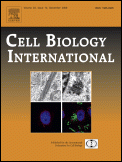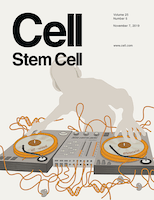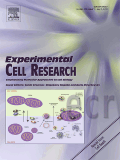
Stem Cells International
Scope & Guideline
Exploring Breakthroughs in Stem Cell Technology
Introduction
Aims and Scopes
- Stem Cell Biology and Mechanisms:
Research articles that delve into the fundamental biology of stem cells, including their differentiation pathways, signaling mechanisms, and interactions with the microenvironment. - Therapeutic Applications of Stem Cells:
Studies focusing on the application of stem cells in treating various diseases, including cancer, neurodegenerative disorders, and tissue injuries. This includes clinical trials and preclinical studies. - Extracellular Vesicles and Their Role in Regeneration:
Investigations into the role of stem cell-derived extracellular vesicles (EVs) in mediating therapeutic effects, such as immunomodulation and tissue regeneration. - Tissue Engineering and Regenerative Medicine:
Research on the engineering of tissues using stem cells and biomaterials, highlighting innovative approaches to enhance repair and regeneration. - Cancer Stem Cells and Tumor Microenvironment:
Exploration of the characteristics of cancer stem cells, their role in tumorigenesis, and their interaction with the tumor microenvironment.
Trending and Emerging
- Regenerative Medicine and Tissue Engineering Innovations:
There is an increasing trend in exploring novel biomaterials and engineering techniques to enhance the regenerative capabilities of stem cells, particularly in tissue engineering applications for complex tissues. - Role of Extracellular Vesicles in Therapeutic Strategies:
Research on the therapeutic potential of stem cell-derived extracellular vesicles is gaining momentum, with studies focusing on their mechanisms of action and applications in various diseases. - Cancer Stem Cells and Immunotherapy:
An emerging focus on the role of cancer stem cells in tumor progression and their potential as targets for novel immunotherapeutic strategies, reflecting a broader interest in precision medicine. - Personalized Medicine Approaches:
A growing interest in tailoring stem cell therapies to individual patient profiles, including genetic and epigenetic considerations, indicates a shift towards more personalized approaches in regenerative medicine.
Declining or Waning
- Basic Stem Cell Research without Clinical Relevance:
There has been a noticeable decrease in purely basic research articles that do not directly translate to clinical applications, as the journal increasingly prioritizes studies with immediate therapeutic implications. - Traditional Stem Cell Sources:
Research focusing solely on traditional sources of stem cells, such as embryonic stem cells, has become less prevalent as the field shifts towards exploring more versatile and accessible sources like induced pluripotent stem cells (iPSCs) and mesenchymal stem cells (MSCs). - In vitro Studies with Limited Application:
The journal has seen fewer in vitro studies that do not extend into in vivo models or clinical applications, as the emphasis is now on research that can lead directly to therapeutic strategies.
Similar Journals

CELL BIOLOGY INTERNATIONAL
Exploring the Frontiers of Cellular ScienceCELL BIOLOGY INTERNATIONAL is a prestigious academic journal dedicated to the rapidly evolving field of cell biology, publishing high-quality research aimed at understanding cellular processes and their implications in various biological contexts. Published by Wiley, this journal has established its relevance with an H-Index that reflects its robust citation impact and a commendable Scopus Rank of #111 out of 285 in the field of Biochemistry, Genetics, and Molecular Biology, positioning it in the 61st percentile. Although it operates under a traditional subscription model, its influential insights are crucial for researchers, professionals, and students alike who are seeking cutting-edge developments in cellular mechanisms and their applications in medicine. The journal spans contributions dating back to 1993, providing a rich archive of knowledge that continues to shape the discourse within the scientific community. With a strong category ranking of Q3 in Cell Biology and Q2 in Medicine (miscellaneous) as of 2023, CELL BIOLOGY INTERNATIONAL stands as a reliable platform for disseminating transformative science in the cellular domain.

Inflammation and Regeneration
Empowering discoveries in inflammation and regenerative therapies.Inflammation and Regeneration is a prominent open-access journal published by BMC, focused on the discerning fields of immunology, cell biology, and regenerative medicine. Since its establishment in 2016, the journal has provided a platform for the dissemination of high-quality research, contributing significantly to the advancement of knowledge in inflammation processes and regenerative therapies. With a remarkable impact reflected in its Q1 quartile rankings in Cell Biology and Immunology for 2023, Inflammation and Regeneration stands out as a leading resource for researchers and practitioners. The journal's commitment to open access ensures that critical findings are readily available to a global audience, fostering collaboration and innovation in the scientific community. With a Scopus ranking that places it in the top 20% of its categories, Inflammation and Regeneration serves as an essential reference for those seeking to stay at the forefront of immunological research and its applications.

Tissue Engineering and Regenerative Medicine
Advancing the Frontiers of Healing and InnovationTissue Engineering and Regenerative Medicine, published by the Korean Tissue Engineering Regenerative Medicine Society, is a distinguished journal focusing on the interdisciplinary fields of tissue engineering, regenerative medicine, and related biomedical innovations. With an ISSN of 1738-2696 and an E-ISSN of 2212-5469, this journal disseminates cutting-edge research and advancements pivotal to developing therapeutic strategies that improve tissue function and repair. As a testament to its scholarly impact, it holds a Q2 ranking in both Biomedical Engineering and Medicine (miscellaneous) categories, reflecting its influence and relevance within the scientific community, particularly with a Scopus rank placing it in the 82nd percentile among similar journals. Although the journal does not offer open access, it provides vital insights and knowledge to researchers, professionals, and students involved in the quest for innovative solutions in medical science and engineering. With its convergence years extending from 2008 to 2024, the journal continues to be an essential platform for the dissemination of high-quality research that drives the field forward.

Genes & Diseases
Bridging the gap between genetics and clinical applications.Genes & Diseases, published by KEAI PUBLISHING LTD, is a premier open-access journal dedicated to advancing the fields of genetics, biochemistry, and molecular biology. Established in 2014 and headquartered in Beijing, China, this journal has quickly risen to prominence, securing a place in the prestigious Q1 quartile in Biochemistry and Genetics (clinical), as well as Q2 in Cell Biology and Q1 in Molecular Biology as of 2023. With a commitment to disseminating cutting-edge research, Genes & Diseases serves as a critical platform for researchers, professionals, and students alike, ensuring that high-quality scientific work is openly accessible to the global community. The journal's exceptional impact is underscored by its selective Scopus rankings, which reflect its influence and relevance in key scientific domains, making it an essential resource for those exploring the intersections of genetics and disease pathology.

Cell Stem Cell
Fostering Global Collaboration in Cutting-Edge Stem Cell DiscoveriesCell Stem Cell, published by CELL PRESS, is a premier journal at the forefront of cellular biology, genetics, and molecular medicine. With an esteemed impact factor and recognized as a Q1 journal in multiple categories including Cell Biology, Genetics, and Molecular Medicine, it offers researchers, professionals, and students rigorous, peer-reviewed articles that shape the future of stem cell research and regenerative medicine. Located in Cambridge, MA, this journal has become an invaluable resource since its inception in 2007 and is committed to disseminating groundbreaking findings that drive innovation and understanding in these critical fields. By consistently ranking within the top percentile of its categories in Scopus, Cell Stem Cell remains an essential platform for scholarly communication, fostering collaboration among leading scientists worldwide. Although the journal does not currently offer open access options, its comprehensive insights are pivotal for anyone engaged in the study of stem cells and their applications.

American Journal of Stem Cells
Pioneering discoveries in stem cell science for a healthier tomorrow.American Journal of Stem Cells is a leading multidisciplinary publication dedicated to advancing the field of regenerative medicine and stem cell research. Published by E-CENTURY PUBLISHING CORP, this journal has gained recognition for its commitment to high-quality scientific contributions, achieving impressive rankings within the Scopus database, particularly in the areas of Biochemistry, Genetics and Molecular Biology, and Developmental Biology. With its focus on innovative research, the journal offers crucial insights and developments that appeal to researchers, professionals, and students alike. Although it is not an open-access journal, the American Journal of Stem Cells plays a pivotal role in disseminating impactful findings that define the future of cellular therapies and regenerative methodologies. The journal's past coverage from 2012 to 2017 reflects its dedication to advancing knowledge in key scientific disciplines, making it an essential resource for anyone engaged in the dynamic landscape of stem cell science.

BIOCELL
Unveiling the Secrets of Cellular InnovationBIOCELL is a distinguished peer-reviewed journal dedicated to the field of Cell Biology, published by TECH SCIENCE PRESS. Since its inception in 1995, the journal has been at the forefront of disseminating innovative research, with converged publication years extending from 1995 to 2013 and from 2015 to 2024. Although it currently holds a Q4 ranking in the Cell Biology category according to the 2023 category quartiles, BIOCELL aims to foster advancements by providing a platform for researchers, professionals, and students to share their findings in biochemistry, genetics, and molecular biology. The journal is available in both print (ISSN: 0327-9545) and digital formats (E-ISSN: 1667-5746) and seeks to attract contributions that enhance scholarly dialogue and understandings of cellular mechanisms and innovations. With a commitment to quality research and critical discourse, BIOCELL plays an important role in nurturing the scientific community within Argentina and beyond, offering vital insights that contribute to the advancement of the life sciences.

IN VITRO CELLULAR & DEVELOPMENTAL BIOLOGY-ANIMAL
Exploring the Depths of In Vitro DevelopmentIN VITRO CELLULAR & DEVELOPMENTAL BIOLOGY-ANIMAL, published by SPRINGER, is a pivotal journal in the fields of cell biology and developmental biology, focusing on in vitro studies that enhance our understanding of animal cellular mechanisms and development. With an ISSN of 1071-2690 and an E-ISSN of 1543-706X, this esteemed journal offers a platform for researchers to present their findings and contribute to the body of knowledge necessary for advancements in biological sciences. As a recognized publication, it holds a 2023 category quartile of Q4 in Cell Biology and Developmental Biology, and Q3 in miscellaneous Medicine, reflecting its competitive position yet inviting critical submissions that can span multidisciplinary approaches. Though currently not open access, it serves as an essential resource for professionals, researchers, and students dedicated to unraveling the complexities of cellular processes in an ever-evolving field. The journal has been continuously published since 1986, signifying its long-standing commitment to fostering scientific discourse and innovation.

EXPERIMENTAL CELL RESEARCH
Connecting Researchers with Groundbreaking DiscoveriesEXPERIMENTAL CELL RESEARCH is a highly respected journal published by Elsevier Inc, specializing in the dynamic and ever-evolving field of Cell Biology. With an impact factor positioned in the Q2 quartile for 2023, it ranks at the 124th position out of 285 in the Scopus Ranks, indicating a solid reputation among peers in the domains of biochemistry, genetics, and molecular biology. Since its inception in 1950, the journal has contributed significantly to the dissemination of groundbreaking research, providing a platform for studies that explore the nuances of cellular mechanisms, processes, and experimental methodologies. Although the journal currently does not offer open access, its commitment to high-quality, peer-reviewed research continues to attract submissions from leading scientists and scholars across the globe. Researchers, professionals, and students alike will find this journal an invaluable resource for keeping abreast of current developments and innovative breakthroughs in cellular science.

Current Stem Cell Reports
Empowering Researchers with Cutting-edge InsightsCurrent Stem Cell Reports, published by Springer Heidelberg, is an esteemed academic journal that has emerged as a pivotal resource in the fields of Cell Biology, Developmental Biology, Genetics, and Molecular Biology. Since its inception in 2015, this journal has consistently contributed to the evolving discourse on stem cell research and its applications, providing a platform for innovative studies and reviews through 2024. With a notable impact indicated by its quartile rankings—Q2 in Developmental Biology and Genetics, and Q3 in Cell Biology and Molecular Biology—it engages a diverse audience of researchers, professionals, and students who seek high-quality, accessible research insights. Although offering a traditional access model, the content remains vital for those invested in understanding the implications of stem cell advancements. Located in Switzerland and operating from the heart of Heidelberg, this journal aspires to bridge gaps in knowledge and stimulate collaboration in the burgeoning field of stem cell science.